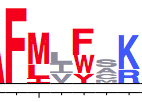Congratulations to Alex for winning the Best Research Presentation Award at the recent Gordon Human Genetics and Genomics Conference! Her presentation, “Are Genetic Interactions Influencing Gene Expression Evidence for Biological Epistasis or Statistical Artifacts?”, is the culmination of her hard work to evaluate the conflicting evidence for and against epistatic gene regulatory interactions in humans.
If you are interested, check out the bioRxiv preprint:
Are Genetic Interactions Influencing Gene Expression Evidence for Biological Epistasis or Statistical Artifacts?
http://biorxiv.org/content/early/2015/06/05/020479
